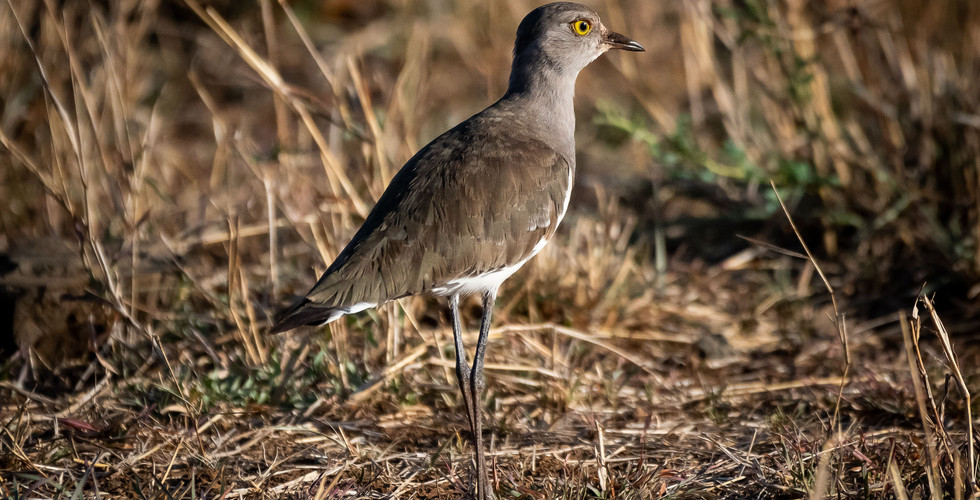7 Weeks in Kruger: Lower Sabie, Part 2 - The Birds
- KrugerExplorer

- Feb 14, 2019
- 4 min read
Last week's blog post shared stories and images of some of the big beasts I saw around Lower Sabie during my epic trip through Kruger National Park. The area around Lower Sabie rest camp is famous for its amazing wildlife and brilliant sightings and the main road back up to Skukuza is one of the most reliable routes for Big 5 animals in the entire park.
What sometimes gets overlooked amongst all this mammal activity is just how brilliant an area Lower Sabie is for birding. The varied landscape presents opportunities to see a range of birds found across wetland, plains and rocky habitats without travelling very far at all and I was extremely impressed with the huge variety of species I encountered!
So part two of our Lower Sabie blog post is all about the birds...!
It takes less than two minutes to drive from the Lower Sabie rest camp gate to the Sunset Dam, so named as so many visitors make a last stop here at the end of the day to catch any final sightings before gate closing time. Although quite small, it’s an absolute treasure trove of birdlife.
This first image is a quite remarkable example of animal interaction – the grey heron is fishing off a hippo’s back!

I struggle to explain this behaviour somewhat. The grey heron, normally a shallow-water wader, gets the benefit of fishing in deeper areas of the dam than it would normally be able to access. Yet, while symbiotic relationships are common in the wild, I’m not really sure what the hippo gets out of this because the heron doesn’t typically eat flies or other parasitic bugs in the way an oxpecker does. Maybe the hippo just enjoys the company!
If you've got any better ideas then please do add your thoughts in the comments below!
Many different species of wading birds scurry through the shallows looking for small fish or amphibians to pick off. Some of these families of birds can often be difficult to tell apart (particularly the sandpipers) and a section of our KrugerExplorer App will use detailed images and descriptions to help visitors identify each species.
Clockwise from top left: Wood sandpiper / little stint / common greenshank / three-banded plover / black-winged stilt.
Moving to the north of Lower Sabie rest camp, there is a good expanse of grassland terrain along the S128, S29 and S122 roads. Given their close proximity to the waters of the mighty Sabie River, these habitats play host to a very different selection of birds compared to the Sunset Dam.
For example, all five species of lapwings found in Kruger can be seen in pretty quick succession if you are lucky.
Left to right: white-crowned lapwing / African wattled lapwing / Senegal lapwing / blacksmith lapwing / crowned lapwing
Check out the white-crowned lapwing in the first image of the above gallery - a close inspection reveals sharp spurs on the 'wrist' joint in the front of the wing. Found on all species of lapwings, these are used in combat against a competitor for matings rights and can cause some considerable damage.
The grasses also play host to herds of herbivorous mammals and this is one of the better places in Kruger to see the western cattle egrets up close.

It is distinguished from other egrets by the orange-buff colours on the bill, legs, crown and throat, although all are variable based on breeding season and it can present as plain white at times!
Finally, the S68 road may be short but it climbs up the Muntshe hill to give a spectacular view over the Mlondozi Dam and the mighty basalt plains beyond. This hill consists of rocky terrains that are not particularly common in Kruger and offer some of the best places to spot rarities such as the mocking cliff chat.

This male (left) and female (right) pairing were right by the picnic area at the summit of the hill and were quite habituated, coming in close to grab any morsels dropped by visitors. The 'sexual dimorphism' (physical differences between males and females) is very pronounced in this species.
This stunning steppe eagle also swooped in and posed in the top of a tree while I was near the picnic site.

Quite often mistaken for the more common tawny eagle, the distinguishing feature is the very long, yellow ‘gape’ – the fleshy part that joins the top and bottom halves of the bill. In the steppe eagle, the gape extends back beyond the middle of the eye, whereas on the tawny eagle it does not reach beyond the middle of the eye. A tawny eagle in Kruger can be seen below.

I had so many other bird sightings from this area of the park too – I haven’t even mentioned the array of species I saw down at the very good Ntandanyathi Hide! It really was extremely special and well beyond my expectations for this part of the park.
We continue to make progress with the KrugerExplorer App and March is still our target launch month - the exact date will become clearer over the next few weeks I should think!
In the meantime, we'll keep the blog posts and photos coming - next stop, the hills of Berg-en-Dal! So check back in for updates or simply add your email address to our Learn More page for occasional notifications on new posts!
Many thanks for reading,
Danny & Charlotte
We'd be thrilled to have you follow our journeys in Kruger and even bigger journey getting the KrugerExplorer App of the ground!
www.krugerexplorer.com
www.krugerexplorer.com/blog
www.instagram.com/krugerexplorer
www.facebook.com/krugerexplorer
























Kruger looks like a bird watchers dream! If the quality of these photos and accompanying information are anything to go by, the app is going to be fantastic.
Great post, thanks for sharing - looks like a brilliant area for birding!